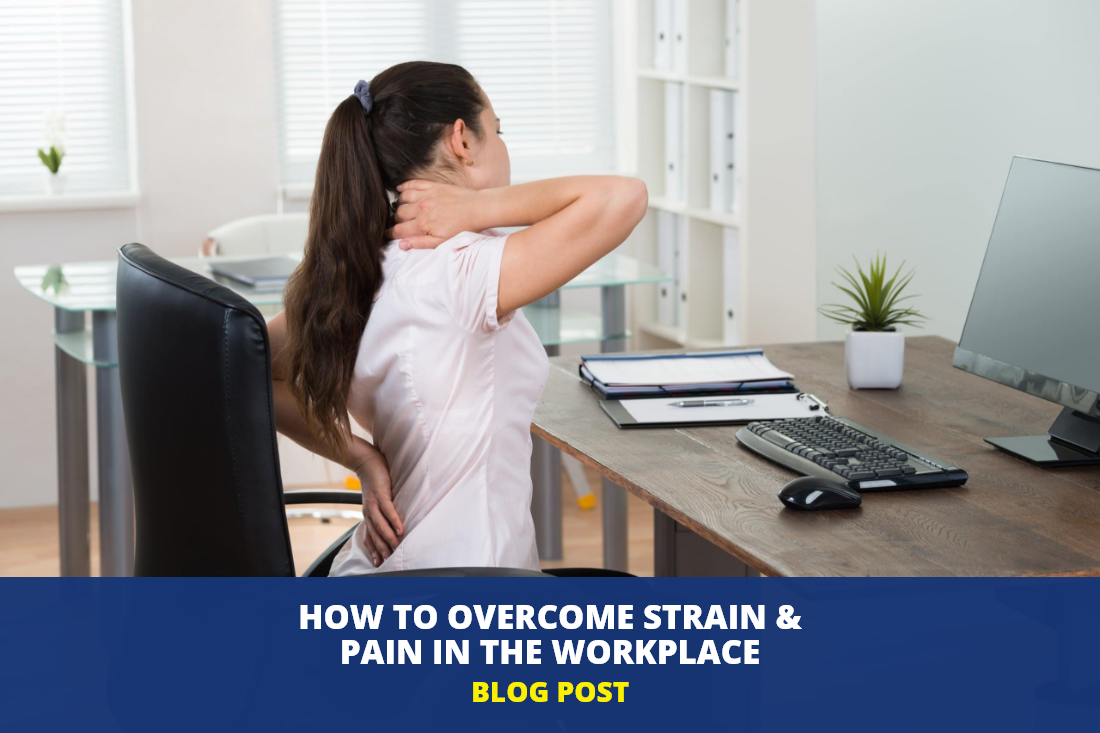Warehouse Clearance Sale – Limited time only!
How to Overcome Strain & Pain in the Workplace
Have you ever experienced the discomfort of a sore neck or back after sitting for prolonged hours without movement? This all-too-common issue is often a result of inadequately designed furniture. Addressing the problem of neck pain in office workers requires more than just suitable furniture; it necessitates a holistic approach that encompasses ergonomic considerations and environmental adjustments.
When considering ways to reduce strain in the workplace, it is important to identify the areas that need improvement regarding physical comfort. The most common places where strain occurs are at your desk/workstation and any necessary tools and equipment needed to complete tasks. Adjusting chairs and desks for maximum comfort levels can improve posture, decrease fatigue, and provide better support for remaining active during the day. Consider adding an adjustable footrest or wrist rest while working; these small investments can make a big difference in energy levels over time.
In addition to making physical adjustments in your workspace, be mindful of the activities you complete daily. Overusing any particular muscle group or joint through repetitive motions can lead to long-term strain and discomfort. Try breaking up your day with different tasks to reduce the risk of injury. This will allow different muscles and joints to be engaged throughout the workday, reducing the strain on any one area of your body.
Finally, ensuring adequate office lighting in the workspace is critical for avoiding unnecessary strain from focusing too long on a task without breaks or reprieve from harsh light sources. Overhead fluorescent office lights should be avoided whenever possible; instead, use natural light sources such as desk lamps when available.
Think about how many hours, days, months, or even years you spend sitting down. Your back needs the proper support, which can only be achieved through ergonomic chairs, desks/furniture. Overcome strain in the workplace by investing in quality ergonomic furniture and accessories, taking breaks throughout the day to allow muscles and joints to reset, and adding natural light sources when possible. Making these adjustments in your personal workspace can make all the difference in avoiding fatigue and strain caused by work. Over time, you will find that this investment was well worth it!
To make your office more comfortable and supportive for your team, spend some time to readjust your layout. It’s also important to teach your employees how to sit best.
For example:
1. Feet flat on the floor
2. Chair backrest supporting the lumbar area
3. Sufficient leg clearance under the desk
4. Thighs parallel with the floor
5. Upper and lower arm form right angle
6. Minimum slope on keyboard
7. Eye level at or just below the top of the monitor
8. Monitor at arm’s length away
9. Upright position with relaxed shoulders

Look at all the different parts of your workspace and see how it can be improved. With your office desk, you want to make sure it can be adjusted to your ideal height. The optimal ergonomic setup should start with your sitting position – feet flat on the floor, with the chair height allowing your thighs to angle down slightly. This position relies on your ‘sitting bones’ to place weight instead of rounding your lower back, causing slouching.
Review the level of your keyboard. You shouldn’t be slumped when your elbows are bent at 90 degrees. If you use a mouse, it should be at the same level as the keyboard. The monitor or laptop screen should be level with your chin.
Avoid using your mobile devices to answer emails. Although we’re using tablets and phones more than ever, it’s not the best for your neck. Do your best to limit your workload and use of these devices, at least when you can be using a computer or laptop.

Healthy work environments also go beyond physical furniture. It’s found within the culture you instil. For example, encourage regular breaks and walking around the office. Posture suffers the longer you sit, so if you experience back, neck or shoulder pain, take a break. Your team needs to know this is okay – to listen to their bodies and take action. You’ll have more engaged, healthier and happier employees.
If your office is always busy, think about getting your employees to set the alarm as a break reminder. You can do this every two hours or find a structure that works for your team.
Switch To Ergonomic Furniture
Don’t put your employee’s health at risk. The best thing you can do for them (and your own business) is to invest in quality, ergonomic furniture. Start with your chairs and desks. At Direct Office, we sell a range of chairs designed with health and safety as a focus. Find the range of office furniture in Melbourne, Canberra, Brisbane, Adelaide, Sydney, and all over Australia
